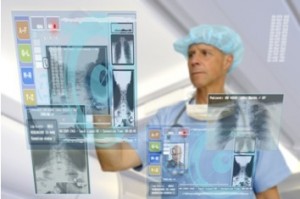Healthcare costshave risen exponentially in America over the last couple of decades, and today’s spending is in the trillions of dollars. While the last couple of years have seen that massive growth in spending slow a bit, it hasn’t yet been curtailed, and it’s definitely not begun to retreat in any significant way.
While legislators and insurers offer up different solutions to the problem, for the consumer caught in the middle, all that matters is the bottom line. The good news? There are some technologies that are helping to make heathcare better and more efficient, which will aid greatly in lowering its costs. If you’re concerned about the high price attached to health these days, here are six ways technology is helping you out.
1. Home Health Care
Providing care for people in their own homes has been a way insurers, providers, and consumers have reduced the burden of overall care costs for a while now. With the advent of home health software, those lowered costs look as though they can go even lower. Providing quality healthcare in any setting is a complex task, and with software that reduces that complexity, greater efficiency results. From billing and scheduling to communication between providers, home health software is helping streamline home care so that it’s better and costs less.
2. Identifying High-Cost Patients
Roughly half of all healthcare spending in the United States is taken up by about 5 percent of those who receive it. This remarkable disparity needs to change. In order to tackle it, however, high-cost patients need to be identified so their health woes can be met more efficiently. With big data and analytics, the patients costing the system the most and those likely to be high-costin the future can be identified, allowing their myriad of needs to be more successfully addressed. By focusing on aspects of care not previously addressed—like mental health and housing—high-cost patients will have improved outcomes. By alerting staff to the presence of high needs and high cost, workflow can also be adapted so that efficiency can prevail.
3. Preventing Readmissions
Some studies suggest that as many as a third of all hospital readmissions can be avoided. If they were, it would mean improved care and an obvious reduction in overall cost as well. Another job for analytics and big datatechnology isif hospitals and other care centers could identify which patients are most at risk for readmission, they could employ greater oversight at discharge, improved interventions, and better follow-up. The extra resources would reduce the likelihood of readmissions, and while the initial cost would be a bit higher, the overall cost would go down. Also, because the extra efforts would only be directed toward patients ripe for readmittance, the same expenditure of resources on other patients wouldn’t be necessary.
4. Higher Standards of Care
By analyzing the wealth of data compiled in electronic health records, doctors, nurses, administrators, and other care providers could more quickly and efficiently determine the best methods for each individual seeking care. Instead of relying as much on trial and error for cases that aren’t clear-cut, the deep wells of big data could be employed to sift through information and find workable solutions. That technology would then result in faster and better outcomes, higher overall standards of care, and a healthier population overall.
5. Better Patient Involvement
One of the biggest culprits in the U.S.’s over $3 trillion annual expenditure on healthcare is chronic health disease. Unhealthy lifestyle choices are expensive, and anything that could yield greater patient involvement in making better lifestyle decisions would have a far-reaching effect on spending. Technology makes patient involvement easier and more accessible. From online health portals where exercise and diet can be tracked to email and chat options that connect people with real doctors and nurses in real time, technology increases the ways in which a patient can be involved in improving his own health—an essential ingredient in reducing chronic disease.
6. More Minimally Invasive Surgeries
Today’s minimally invasive surgeries seem like they’re straight out of “Star Trek.” Tiny, battery-powered tools use everything from radio frequencies and light energy to ultrasound and lasers to do the work that just decades ago could only be accomplished with a blade. This change in method not only means adverse effects are less likely, but that recovery time is shorter. Also, when surgery is minimally invasive, clinics can do the work instead of hospitals. Each of these changes saves money, but taken together, they’re a veritable windfall.
For the time being, healthcare costs continue to dominate many national and private conversations. Thanks to technology, however, there may a light at the end of that conversation’s tunnel.









